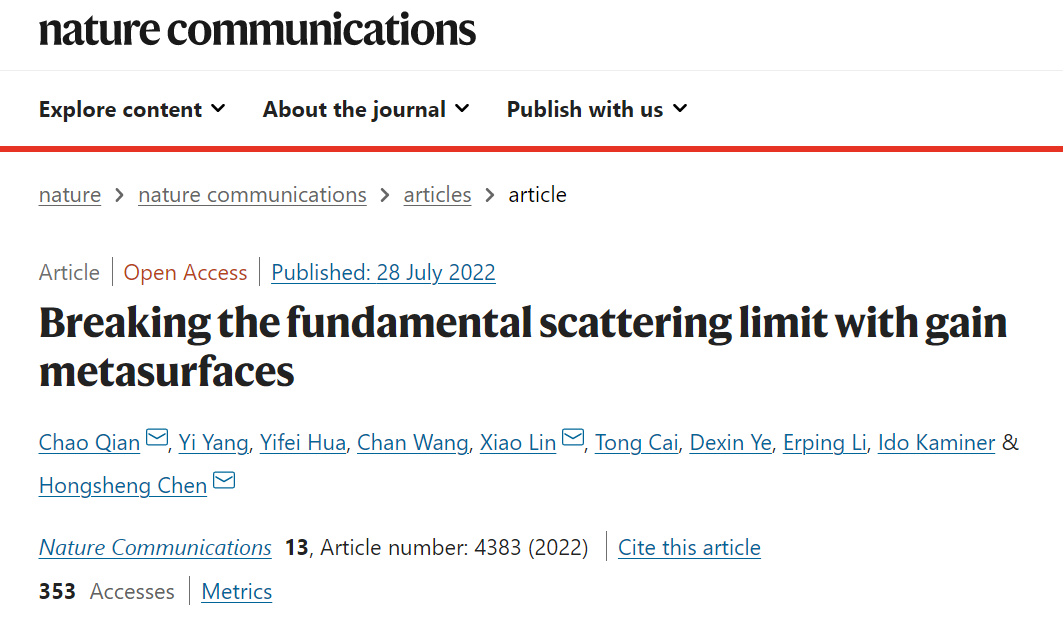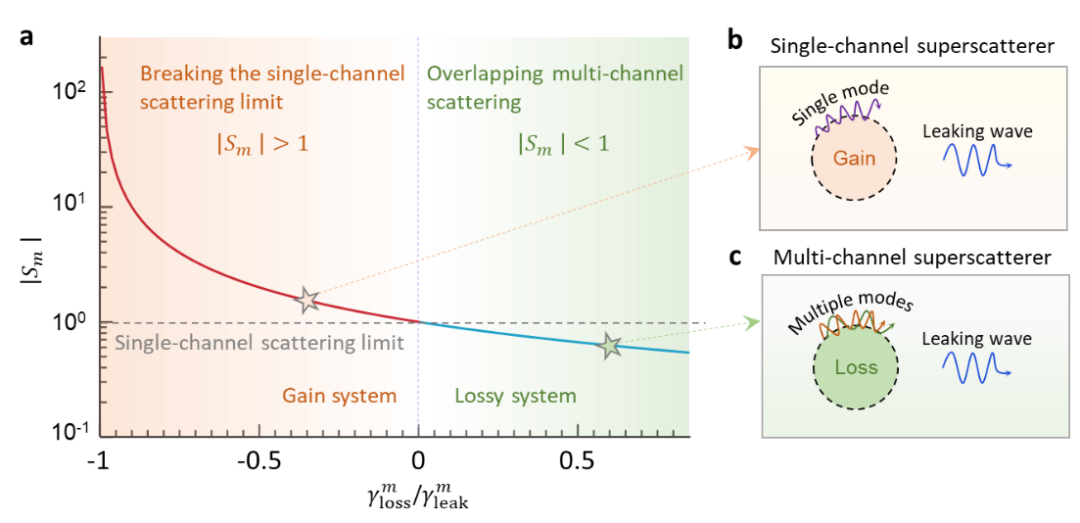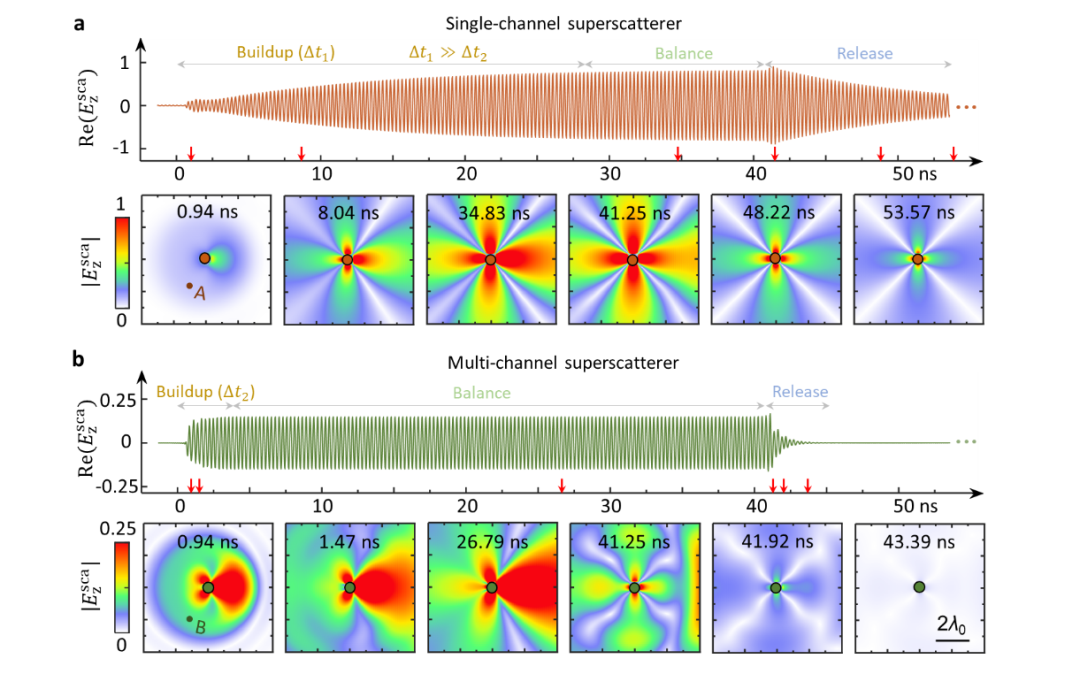Recently, Dr. QIAN Chao, researcher of ZJUI, together with domestic and foreign researchers, has used gain metasurfaces to break the fundamental scattering limit and reveal the transient response of scattering enhancement. The results were published in Nature Communications under the title of “Breaking the fundamental scattering limit with gain metasurfaces”.

Free manipulation of electromagnetic scattering is a challenging research topic. As early as 1871, light scattering phenomena have been studied by scientists such as Rayleigh, Raman, and Mie. Among them, enhancing the scattering of particles has important application prospects in fields such as photovoltaic power generation and biosensing imaging due to its ability to improve the optical resolution and sensitivity of the surrounding medium. In electromagnetic stealth, we can envision small UAVs disguised as mega UAVs to deceive enemy detection systems. However, most of the traditional methods of enhancing scattering such as transformation optics and surface plasmon resonance work in the lossy regime, where the fundamental scattering limit of the object still exists and cannot enhance scattering at will.

▲ Figure 1: breaking the fundamental physical scattering limit
To address this challenge, we show how to break this “cage” by exploiting gain media (Figure 1). According to the temporal coupled mode theory, the scattering limit will fail in the gain regime, so the scattering cross-section can be increased infinitely. On the aspect of visual effect, it is expected to build an “image” much larger than the size of the object itself. We analyze the transient response of scattering by illuminating the scatterer with a window function and reveal the whole process of energy accumulation-equilibrium-release in the time domain (Figure 2) and find that the homeostasis set up time is different for objects with different scattering strengths. For example, the gain scatterer in Figure 2 has a homeostasis set up time of 28.5 nanoseconds, while the lossy scatterer in Figure 2b has a homeostasis set up time of 4.1 nanoseconds.

▲ Figure 2: transient response of scatters
How to experimentally realize gain materials is the key to breaking the scattering limit, and it is also a very challenging research topic at present. In this regard, we propose a method of constructing gain metasurfaces using tunneling diodes, which have the property of negative resistance and can amplify electromagnetic waves. Taking the subwavelength cylinder as the basic model, using the Mie scattering theory and the inverse design optimization algorithm, the total scattering cross section is more than 40 times the fundamental scattering limit. In the experiment, we place the gain scatterer in the waveguide to verify the phenomenon from both near and far field perspectives.
The results generalize the prevailing paradigms for scattering systems and provide a new idea for freely manipulating electromagnetic scattering. The proposed gain metasurfaces provide a versatile physical platform for verifying other exotic scattering phenomena and has promising applications in tunable metamaterials, nanolaser, and non-Hermitian invisibility.

▲ Figure 3: experimental observation of gain scattering
Researcher QIAN Chao is the first author and the corresponding author of the paper. The research was done in collaboration with domestic and foreign experts including researcher LIN Xiao, Professor LI Erping and Professor CHEN Hongsheng. The work was supported by the National Natural Science Foundation of China and other projects.
Article link: https://www.nature.com/articles/s41467-022-32067-9







